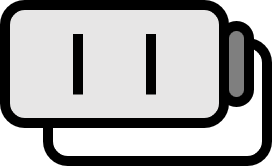Momentum and Impulse Relationship
Definition
Momentum
The product of an object’s mass and velocity is called momentum, denoted by $p$. While in high school physics, velocity $v$ is often used to represent the state of motion of an object, in college physics, momentum $p$ is more commonly used.
$$ \vec{p}=m\vec{v}[kg\cdot m/s] $$
Since velocity $v$ is a vector, so is momentum. Since mass $m$ is always positive, the direction of velocity and momentum are always the same. It is evident that the larger the mass or the magnitude of velocity, the larger the momentum. If represented on a graph, it would look like the figure below. In the case of constant acceleration linear motion, it is simply the multiplication of mass $m$, hence the shape of the graph is the same.

Impulse
The product of the force exerted on an object and the duration is called impulse, denoted by $I$.
$$ \vec{I}=\vec{F}\cdot \Delta t[N\cdot s] $$
Since force $\vec{F}$ is a vector, impulse is also a vector. Since time $t$ is always positive, the direction of the force and the impulse are the same. It is understood that the larger the magnitude of the force, or the longer the force acts, the greater the impulse. This can be represented in a graph as shown below.

Formulas
Relationship between Momentum and Impulse
$$ \begin{align} \vec{F} =&\ma=m\frac { \Delta \vec{v} }{ \Delta t }=\frac { m\Delta \vec{v} }{ \Delta t }=\frac { \Delta \vec{p} }{ \Delta t } \\ \vec{I}=&\ \vec{F}\cdot \Delta t \end{align} $$
From equation 1 and equation 2, the following can be derived:
$$ \vec{I}=\vec{F}\cdot \Delta t=\Delta \vec{p} $$
As can be seen from the equation, ‘impulse equals the change in momentum’. It is also evident that force $\vec{F}$ is the rate of change of momentum over time.
